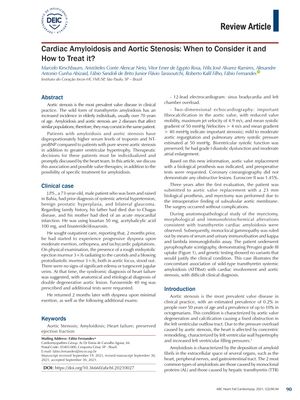Cardiac Amyloidosis and Aortic Stenosis: When to Consider It and How to Treat It
January 2021
in “
ABC Heart Failure & Cardiomyopathy
”

TLDR When treating older patients with both heart valve disease and heart muscle disease, doctors should create personalized treatment plans that address both conditions.
The document discusses the coexistence of cardiac amyloidosis and aortic stenosis, particularly in elderly individuals over 70 years of age, and highlights that patients with both conditions present higher serum levels of troponin and NT-proBNP, as well as greater ventricular hypertrophy, compared to those with only aortic stenosis. It emphasizes the need for individualized treatment plans and the involvement of a heart team in decision-making. The article also presents a clinical case of a 73-year-old male patient with a history of various health issues, who exhibited symptoms consistent with heart failure and was diagnosed with a double degenerative aortic lesion. The patient was prescribed furosemide and underwent further testing. The article suggests that when treating patients with these coexisting conditions, consideration should be given to both possible valve therapies and specific treatments for amyloidosis.